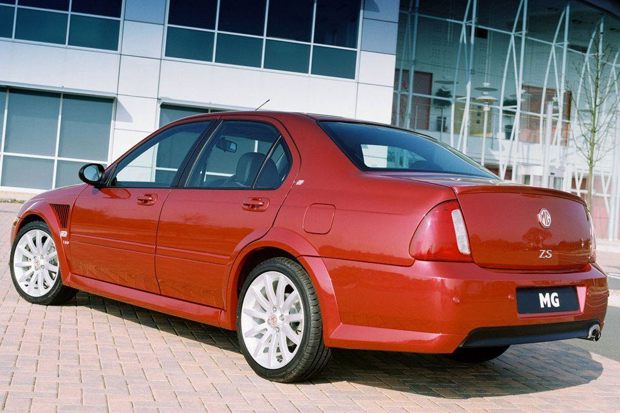A future classic? MG ZS

The early 2000s were very much the beginning of the end for MG Rover, after former owner BMW famously sold its ‘English patient’ to the Phoenix Consortium for a tenner.
Despite the promising name, MG Rover would never really rise from the ashes – but if it ever came close then it was in the form of the MG Z cars, which were a 'full fat, high caffeine' marketing masterpiece.
And with the ZS, it was even more than that. Here was that rarest of things – a silk purse made from a sow’s ear.
Based on the Rover 45, itself based on a long-defunct Honda Civic, but the only offering that Rover really had in the mid-size compact segment of the market, the world’s motoring media were hardly expecting great things from the MG-badged version of an already outdated car.
But how wrong they were. There was a reason that the first car MG allowed into the sweaty palms of the UK’s motoring hacks was the 178bhp MG ZS 180, with the 2.5-litre quad cam KV6 engine from the Rover 75, a fruity exhaust and a completely reworked steering and suspension package.
The assembled journalists weren’t expecting the Z-cars to be well engineered. After all, the 45 on which the ZS was based was way behind the class average. The interior packaging was poor, the plastics grim.
In addition, the rather colourful paint pallet and less then subtle rear wing made the ZS far from a shrinking violet, as if MG had ram-raided its nearest Halfords and then proceeded to glue on its entire heist. The MG ZS, then, was asking for a bit of a kicking. But for one thing…

Under the skin, MG Rover’s engineers had been extremely busy. Not only that, but they’d managed to prove they were among the very best in the business when it came to chassis dynamics.
Whisper it, but all Rovers from the '90s onwards were far better to drive than most people expected. The MG ZS, though, was a complete revelation.
The press wanted to hate it, but they couldn’t, because the MG ZS 180 was (a flawed) but brilliant piece of kit. No front-wheel-drive performance saloon could match it for agility, steering feel or point-to-point pace. Very few 4WD cars could, either, yet the MG ZS was a fraction of the price of a Subaru WRX.
The MG ZS set the bar for the rest of the Z-car range, but pound-for-pound it was unarguably the best. Those who didn’t want V6 running costs could go for the K-series engined ZS120, which was just as terrific in the handling department, lively enough, easy to tune and far less greedy on the juice.
There was also a turbodiesel variant featuring the clattery but eager L-series diesel – a step too far, maybe, but it was at least an option for fleets.
Soon, 110bhp 1.6-litre and CVT automatic versions followed, but they were really for those who craved the MG look above all else – they had the MG ZS suspension set up, but were largely all mouth and no trousers.
The 120 and 180 versions are already enjoying a strong following, and in the past year or so values have stabilised, from being utterly disposable sub-£500 bangers, to good examples fetching well into four figures.
And that’s how it should be, because they’re great cars and they’re getting rarer by the day. Find a good one, check the front jacking points and bulkhead very carefully for rot - and you’ll have a truly enjoyable everyday classic that will never depreciate. Find a classic MG for sale.

